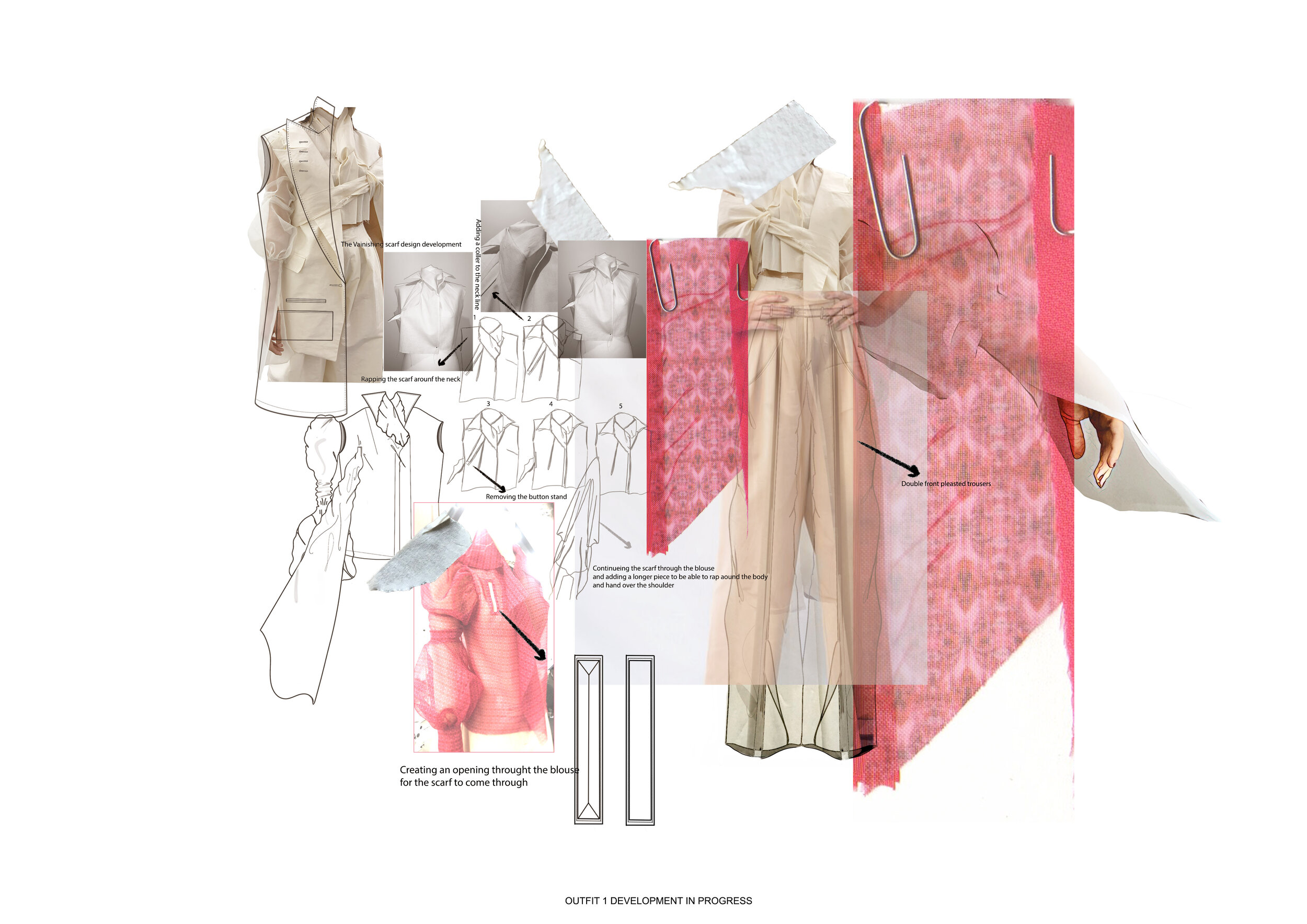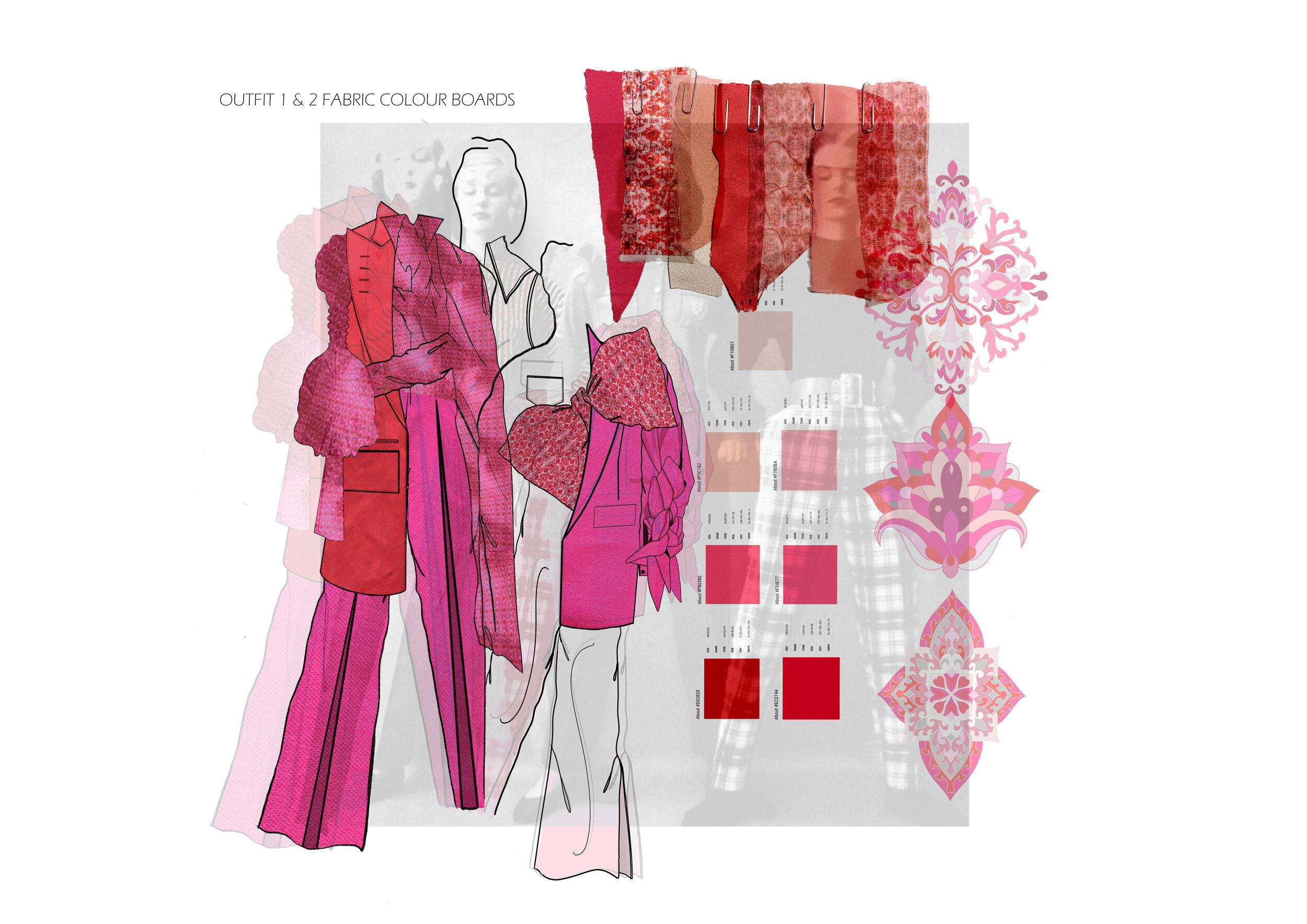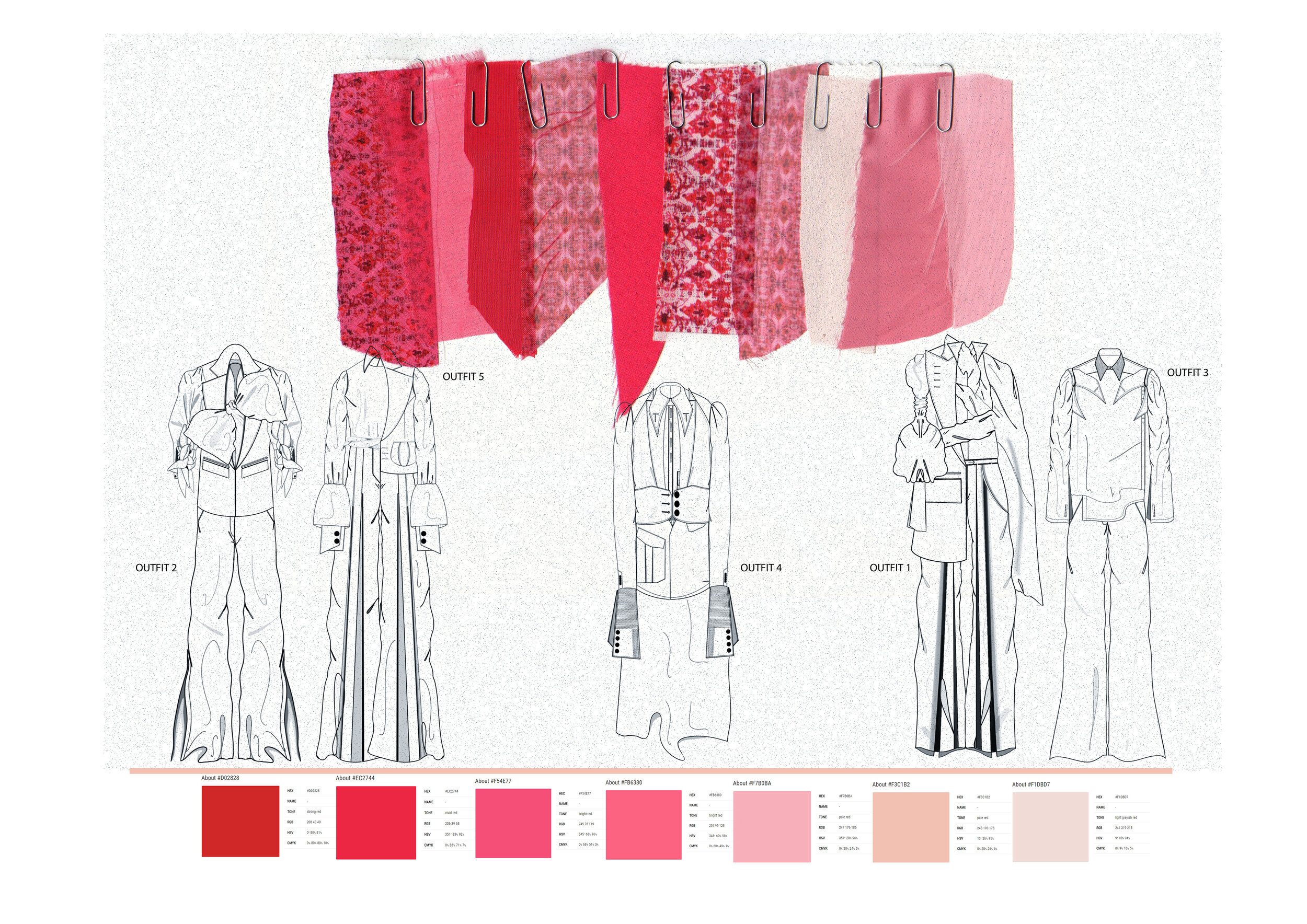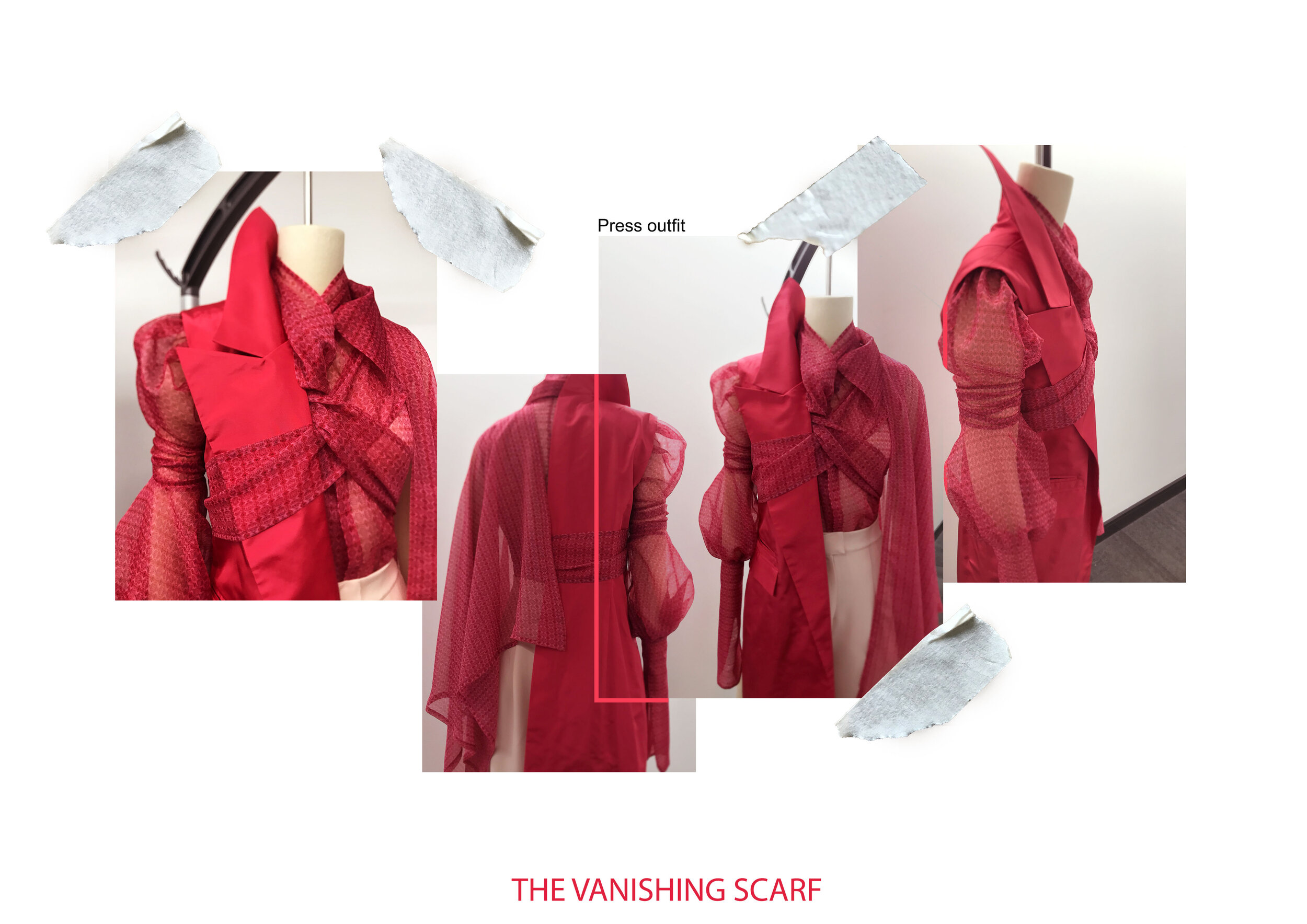Taz Dorodi
Meet GFF Talent Taz Dorodi, who is finishing her final year project as a graduate of Leeds Arts University. Taz’s final collection is inspired by her childhood in Iran, and explores women’s empowerment through fashion. She taps into her personal history and preconceptions of masculine and feminine style to debunk traditional beliefs and present a modern, liberated idea of fashion. Read on to learn more about Taz’s collection.
What is the most valuable thing you have learnt at university?
For me one, of the most valuable things that I learnt during my studies was communication skills. I believe communication is key in fashion world especially If you are planning on managing a team in the future. This is a skill that I began learning throughout my study at university. Also managing my time is one of the most important things I was taught. If you can't manage your time, how will anything get done? I believe our ability to complete tasks on time is crucial.
There are barely any positions that do not include time management as an important skill. It allowed me to build my teamwork skills. It’s really important to see what you can mesh within a team environment, it is essential. The last but not the least important skill is creativity skills that is a great skill in terms of self-expression. University has allowed me to express a lot of creativity that I never knew I had. In another word I guess it helped me to know who I really am and what is my style for the future and which path I would like to take as an independent designer. Many careers require their employers to be creative and to me that is one of the most important steps to begin our future career.
What was the starting point of inspiration for your final project?
The inspiration is based on observations from a form of self-reflection and the personal experiences of the designer and relates this autobiographical narrative to a broader cultural, political and social context and awareness as well as many collective perspectives on the advancement of gender equality and women's empowerment in society. My aim is to promoting it so that women can have the right to dress in their own way without being criticized by society or the opposite sex or even their own race.
This is a major problem, which is debated very widely in many countries, whether developed or in the process of developing and various theories have been published in this regard. This problem can be massively intensified in different races, while in others it’s not as salient. Growing up as a girl in Iran, fashion was always a form of “Protest”. In Iran, women who make fashion statements can break the law and risk their lives. They use fashion as a form of resistance. I was instantly drawn to the idea of “Restriction”, and how social inequality between men and women is reflected.
The fact that they didn’t have a chance to voice their opinion. I want to emphasise how masculine women become in the sense of their lifestyle. During the process the idea was to create both masculinity and femininity throughout the collection to fight for women's right and to achieve gender equality, a debate that has not yet been spoken or mentioned in any way. I have always been interested in womenswear tailoring and I truly believe: ''What gives a woman more power and visibility than a suit''!
Wearing scarfs (Hijab) is something that is forced in Iran’s culture and for that I created my own printed fabrics to use as a symbol throughout my collection also explored a technique, I have called the ‘vanishing scarf'. Each design piece juxtaposes a different combination of silhouettes exploring both fluidity and structure. I wanted to create a piece ( collection ) that is inspired by what I have experience my whole life as a woman. I have struggled with the idea of always being under pressure and stress of not be able to become who I am today as a woman in my own culture. For someone not to be able to achieve their goal in life because of it and had to start from zero all over again in something that she always was passionate about.
What form will your final project take?
The collection leads its way to the modern tailored costume, which was a considerable liberation in fashion with the new, comfortable, loose-waist jacket and the straight off the ground pants to rapidly become the classic style. Following the idea of the Islamic Revolution using the scarf as a complete cover of the '' veil '' - because of its versatility and ability to make the appearance more feminine and personal - remains in the collection, but it is used as another purpose during the practical aspect of the research. The project known as the ‘’Vanishing scarf’’ started with the creation of the first outfit with a scarf that is part of the garment and has started as a separate piece.
As the development idea progresses, the scarf is easily adjustable with the underside panels becoming part of the semi-lateral cover of the arm or body and the trail at the back. Part of my design work is inspired by the 1980-90s as they were characterized as being independent and powerful in their age; an age in which more women entered the world of work than ever before, seeking to usurp the position of men in business and clothing. To finalise the combination of different ideas and methods to create the right structure and volume, a lot of practice and repetition is being done throughout toiling.
Creating wider shoulders and trousers and the female shoulder line becoming wider and squarer supported by shoulder pads. Shoulder pads were an important feature in every type of clothing, varying from flexible blouse pads to wider and more structured form in over jacket or suit. Throughout the collection, retaining the masculine style but with softer fabrics for a more relaxed, comfortable, feminine look. Also, detailing bow-tie collar blouses and tailored suits to recreate a rugged yet smooth-textured feel for a more powerful look in women's wear range. Adding the trousers further specifics including extra flared, pleated and wide leg bottoms. The style is close fitting at the top and begins to flare from the hips with extra fullness all way down to the hem, placing on the bias to achieve the necessary smooth clinging lines and flowing hems. In addition, the design follows up on the idea as a tailored style that requires skilful manipulation of the fabric to add on more details for sleeves and then it also began to drop, creating a more rounded -although still extended- shoulder line. The development of structured silhouettes were crucial elements of the research for my final collection.
What materials have you used and how did you source them?
Throughout the collection, retaining the masculine style but with softer fabrics for a more relaxed, comfortable, feminine look. For my final year collection, the fabrics that I have used is to create a contrast in their touch and look to give the idea of both fluidity and structure. Therefore, I have used taffeta with a touch of silk, organza, chiffon, silk, crepe and 100% wool tailored cloth Etc. Through this process I have challenged myself by using taffeta for a tailored sharp lapel half suit that was used for Alexander McQueen’s Winter/Autumn19 Rose dress. I was inspired by my cultures beautiful print and textile design, and wanted to create my own design for printing fabrics. So, I decided to design and print my work on different type of fabrics as I mentioned I am using.
Most of my prints are on Paris chiffon, taffeta, silk. 90% of my fabrics used in my collection have been donated by the amazing Alexander McQueen team members and for my prints I have outsourced them from the great print company in the UK as we all know '' CONTRADO''. Also, I think using their (Alexander McQueen) fabrics has created kind of a more confident for me into making my collection because I believe my style of work connects with their touch of material and I think I wouldn't have chosen the best fabrics if it wasn’t for them. So, I am really thankful for having this opportunity and get to use their donation for my final year collection. Unfortunately, some of the cloth donated from McQueen wasn't enough meters on the role and some parts wear damaged and no good for use so I had to try and source a similar fabric online. So, one or two pieces of my collection’s fabrics are sourced online but mostly are donated for me.
How has it evolved from your initial ideas and what have you learnt along the way?
Mistakes, experimentation, and failure are mostly the topic in creativity these days. I always come up with an idea and design very quickly and I can create it as I always feel confident about making and I’m never afraid, but as I progress along the way, I usually come across a lot of different designs and parts that I am able to do with many different techniques. The development of each piece, especially on the stand, helped me to develop my original idea and bring me to the idea for my final work. Something that always would help during the process is developing the idea over and over again until you finally get to the one idea you want to create. This has helped me a lot to get to the final work that I'm really happy about.
I learned that sometimes with some silhouette, its best to create your garment maybe just the bodice with a fabric similar to the one you have in mind to see if it actually gives you the same result as you are expecting. This is something that went wrong many times for me. So, I guess for me it’s all about experimenting and practice throughout your work and it would always bring the best results. Also, during this process I got familiar with the way that different fabrics work both individually and together and what would work the best depending on the design and silhouettes you're working with. What change for me was the choice of fabrics to suit my collection and concept. After many researches and trying to get that impression from looking at the collection I finally got to change all my fabrics and thanks to Alexander McQueen I got donated the perfect set of fabric for my final year collection. One thing that this experiment has taught me is doing a lot of research through your idea. Research is a strong step of the beginning for every designer.
What are the messages and themes behind your project that you want people to take away? Do explore any topics like diversity, sustainability or politics in your work?
The collection draws inspiration from cultural status, study and life, in this case (Iran) -where sexual identities and gender differences were not critically debated in- and the difference between a woman's position in the workplace as mentioned in previous chapters and the power to achieve equality especially for 21st century women in the corporate world. The aim was to explore the shifting meaning of ‘’Fashion’’, Particularly in relation to gender equality and empowering women in society, especially in the workplace. It concentrated on fashion not just as clothes, but as power, and particularly the ' equality ' in femininity and masculinity it helps to build. To achieve change in the codes of power in the workplace by creating tailored suits that are represented to be recognised as a trope of leadership, while the suit is still typically the last word when it comes to business, it is no longer restricted, for women.
Power dressing and fashion are two basic social-cultural factors that shape the gender. The purpose of my collection and the message is to approach the equality of different masculine and feminine structures in choosing the type of clothing and its impact on the value and respect of the opposite sex or even the same sex. The battle for women's pants endorses the different behaviour of men and women, but this does not mean that women should only be seen in blouses, skirts and dresses. I believe clothes should make women feel strong, sexy and empowered. It’s still worth remembering that bespoke clothing not only make us look unique but what is more important, fits our body well and gives is the feeling of absolute comfort. My design also speaks the language of how a strong piece of clothing could speak for its self, and by looking at it you can feel the power and freedom of a woman with no restrictions what so ever.
What’s an aspect of the fashion industry that you’re passionate about fixing or having a positive impact on?
I am really interested in sustainability and I care for a better place for our environment and I really do appreciate the fashion industry that are responding to pollution concerns in in many different ways. I would love to see and to appreciate bespoke clothing more than anything in the fashion industry. I believe in one off piece that make everyone feel so special and unique. Also, this is something that would never turn into fast fashion as its all unique to each customer. Bespoke clothing is something that has grown the past few years and is making its way through. Me as someone who wants to become an independent bespoke designer specially in tailoring would want to see more opportunities in this topic.
Especially apprenticeships, internships and jobs for graduates. It not about going straight into industry but it’s also an opportunity for us to gain more experience, knowledge and to get to learn more about our path that we have chosen to who we want to become as a designer in the future. I'd like to see more of this in the fashion industry, it’s something that could be anything from tailoring to street style. Unfortunately, I don't get to see much of this in the fashion world its mostly seen in Savile row. I have always dreamed of Savile row but also combine it with becoming a bespoke clothing designer in various style of work. Many that are working in Savile row don't get to be in the fashion world but I would love that to happen for me, to be able to be a part of both worlds and combine them as one. I’d love to become the inspiration for many other to be able to follow my path and become stronger together at this amazing opportunity.
What is your plan once you finish your BA?
After my graduation, I would love to take place in an apprenticeship at a bespoke tailor. With my experience and achievement over the past few years, especially in women's clothing, this would be a great opportunity for me to gain more knowledge and to learn more about something I've always been passionate about and that’s becoming an independent bespoke designer. I'd love to become a master in tailor for both menswear and womenswear but preferably womenswear. Having extensive experience in pattern cutting and sewing as well as my proven commitment to producing high quality and innovative garments, from starting my initial designs to making many garments over the years, I am well prepared to go beyond fashion design expectations.
My recent job as a women's clothing designer gave me the opportunity to experience a real business environment. Having exhibit understanding in fabric, design, fittings, alterations, modifications and production as well as gaining a reputation for innovative design, a constant dedication to top-notch fantastic and conceptual integrity and careful attention to element is something I would desire to grow at some stage.
My plan for the future is to have my own independent bespoke clothing studio and to creates the most wonderful and unique items of clothing that any woman would feel amazing in. After few years of having the experience as an independent designer I'd love to have international opportunities and grow my business, especially having a studio in Amsterdam. I will never stop learning, any opportunities coming my way I would love to challenge myself and gain as much knowledge as I can. I always believe '' ITS' NEVER TOO LATE''.












